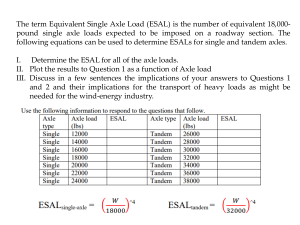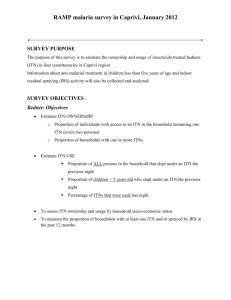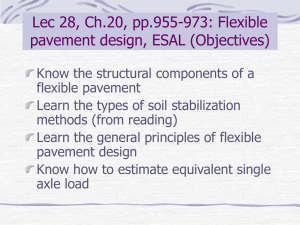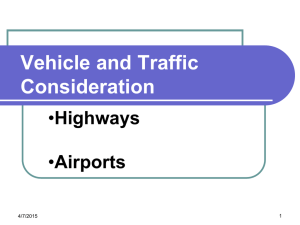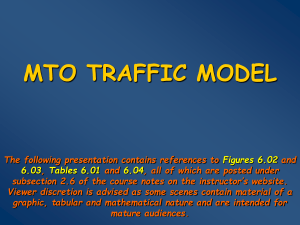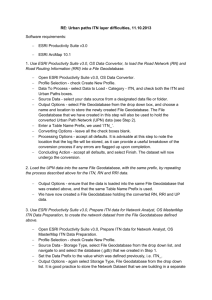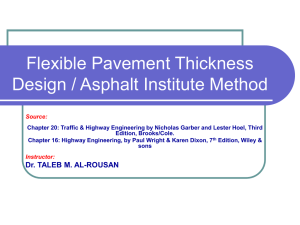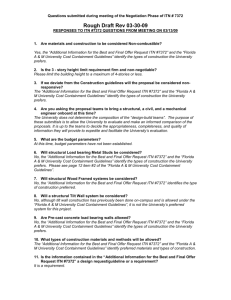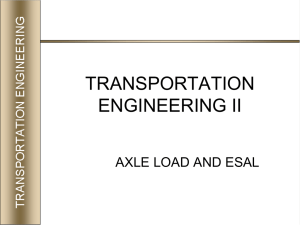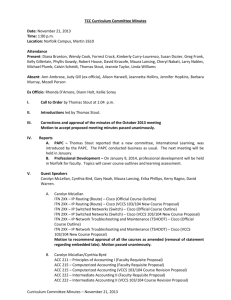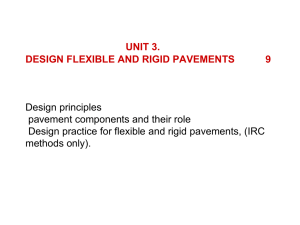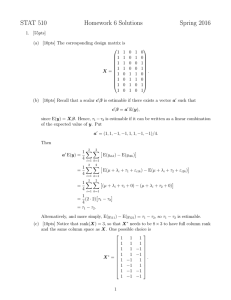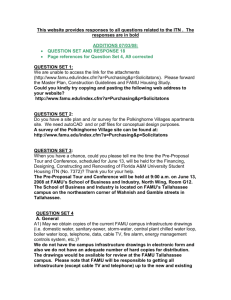Traffic Terms and Concepts
advertisement
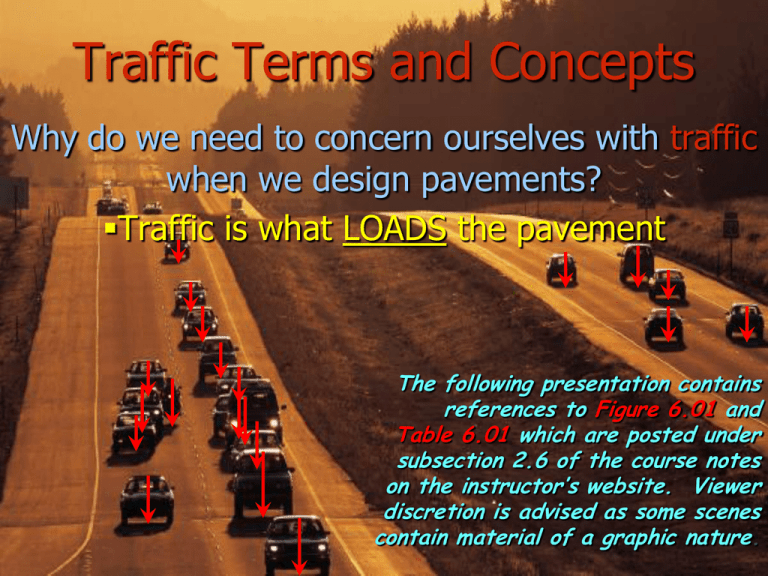
Traffic Terms and Concepts Why do we need to concern ourselves with traffic when we design pavements? Traffic is what LOADS the pavement The following presentation contains references to Figure 6.01 and Table 6.01 which are posted under subsection 2.6 of the course notes on the instructor’s website. Viewer discretion is advised as some scenes contain material of a graphic nature. Traffic loads are cyclic (repetitious) Repeated, cyclic loads on an structure eventually result in structural fatigue We see the result of this fatigue as pavement damage or distress 6.01 Explain the concept of load equivalency and define the standard unit load/configuration used in pavement design technology. heavy vehicles cause damage to pavements the heavier the load per axle, the more damage in order to assess the damage caused by the many different types/configurations of vehicles, one specific load/configuration was adopted as the standard • The standard adopted is the 18,000 lb single axle load, a truck with a single rear axle • the rear wheels each transmit 9000 lb loads to the pavement 9000 lb 9000 lb 18,000 lb = 80 kN a load equivalency factor gives the number of repetitions of the standard load/configuration that would cause an equivalent amount of damage as one pass of the specific vehicle; eg., a load equivalency factor of 2.5 means that… = one pass of a specific vehicle causes an equivalent amount of damage as two and a half passes of the standard vehicle 6.02 Define the following terms: a) ESAL b) ITN c) DTN a) the standard load and axle configuration to which all other load and axle configurations are converted when evaluating traffic loads for pavement structural design ESAL = Equivalent Single Axle Load (= 80 kN) 9000 lb 9000 lb ITN (Initial Traffic Number) the average number of ESAL's/day in the first year of a pavement design analysis period DTN (Design Traffic Number) the average number of ESAL's/day over the entire pavement design analysis period The total ESAL applications over the design analysis period divided by the number of traffic days eg., 6,000,000 ESAL’s over 20 years = 300,000 ESAL’s per year or 1,000 ESAL’s per day for 300 truck days per year (i.e., DTN = 1000) 6.03 Apply the Asphalt Institute’s model to determine ITN. Find Figure 2.01 in the course notes. 1. 2. 3. 4. 5. Example shows: Locate WT on scale D. Locate HT on scale C. Extend line to pivot line, B. Locate L on scale E. Extend line from E through B to ITN on scale A. Nomenclature: WT = Average Gross Vehicle Weight of heavy trucks in kips HT = Average daily number of Heavy Trucks in the design lane L = the legal axle limit in kips ITN = the Initial Traffic Number EXAMPLE A new 4-lane road pavement is to have an AADT of 12,500 vpd with 10% heavy trucks whose average gross vehicle weight is 40,000 lb. If the legal single axle load limit is 20,000 lb, find the ITN. With no indication otherwise, assume two-way traffic operation and a directional split of 50%. Remember, AADT is bidirectional! A. 12500 x 0.5 = 6250 vpd in one direction B. 6250 x 0.1 = 625 heavy trucks per day in one direction Use Table 6.01 from the course notes to find the Lane Distribution Factor, LDF: TABLE 6.01 MTO LANE DISTRIBUTION FACTORS (After: "Pavement Design and Rehabilitation Manual", 1990) Highway Type AADT (vpd) Lane Distribution Factor, LDF 2 lanes All 1.00 < 5000 0.85 5000 - 15000 0.80 15000 - 25000 0.75 > 25000 0.70 < 15000 0.60 15000 - 25000 0.55 25000 - 40000 0.50 > 40000 0.45 For 4 lanes, 5000<12500<15000 4 lanes LDF = 0.80 HT = 625 x 0.80 HT = 500 6 lanes So, WT = 40 kips and HT = 500 tpd then L = 20 kips and ITN = 520 ESALs/day Or use the equation: ITN HT 1 . 0658 WT 10 1 . 4220 6 . 9474 L 3 . 4648 HT ITN 1 . 0658 WT 10 ITN 500 1 . 0658 ITN L 3 . 4648 6 . 9474 40 10 1 . 4220 1 . 4220 20 3 . 4648 6 . 9474 752 . 6 189 . 7 32196 .5 8859312 . 1 ITN 518 . 8 519 ESALs/day
